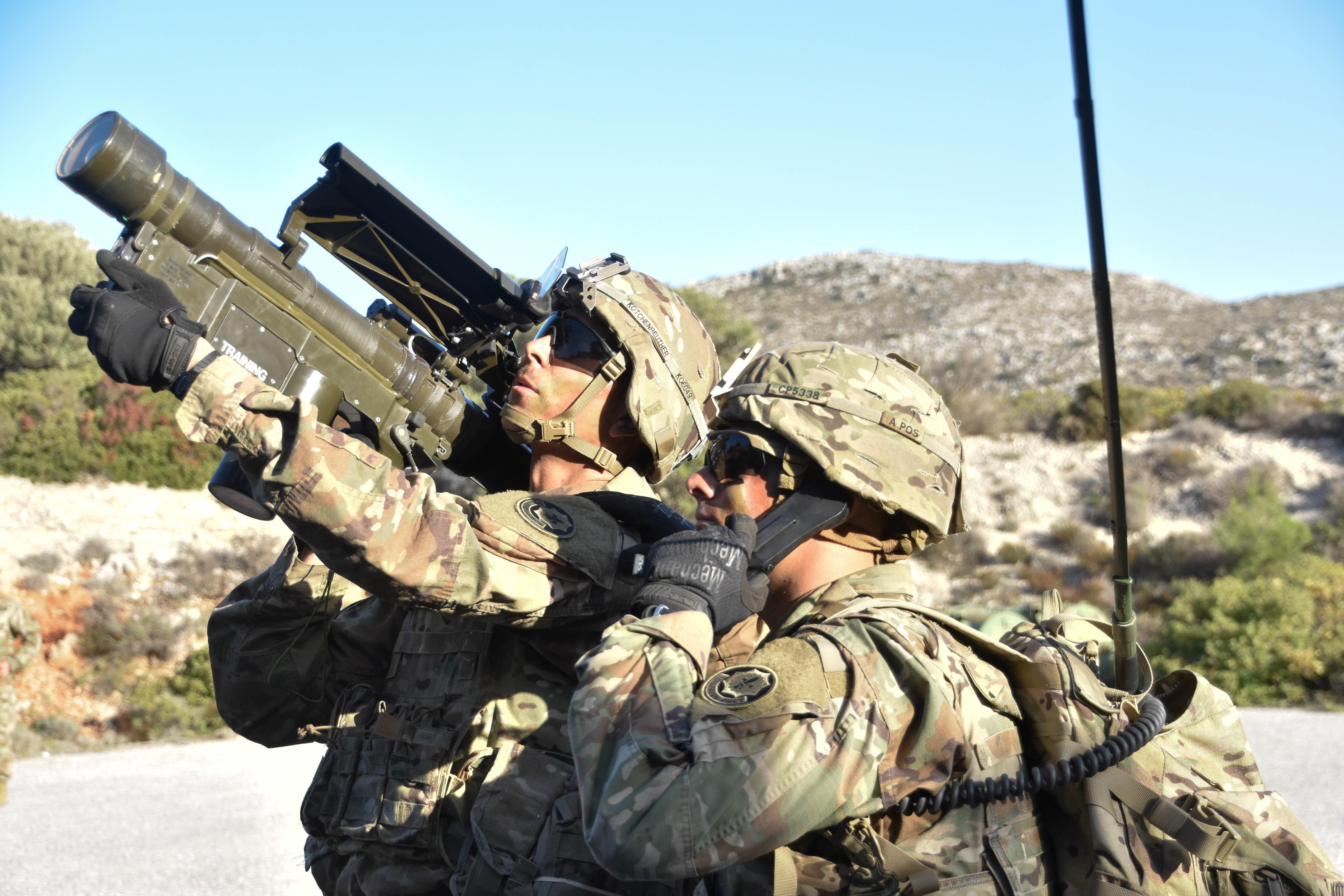
The U.S. Army has started a long-term search for a replacement for the Raytheon FIM-92 Stinger short-range air defense surface-to-air missile system, with a contract award for up to 8,000 missiles planned by fiscal 2026.
Any replacement for the Stinger must be compatible with the Initial Mobile-Short-Range Air Defense (IM-SHORAD), which uses the Stinger Vehicle Universal Launcher, according to a market survey released on Nov. 10 by the Army Contracting Command at Redstone Arsenal, Alabama.
“The Army is conducting a SHORAD study which will inform efforts to modernize and to address emerging threats, which may increase the demand for MANPADS capable missiles,” said the sources sought notice.
The new missile must also be able to defeat fixed-wing ground attack aircraft, rotary wing aircraft and unmanned aircraft systems (UAS) in a size class that ranges between the Boeing Insitu Scan Eagle and the Textron AAI RQ-7, which are examples of Group 2 and Group 3 UAS.
The Army is extending the service life of the Stinger Block 1, but the original version of the Stinger with a reprogrammable microprocessor will become obsolete in fiscal 2023, the notice said.
The sources sought notice asked interested companies to supply a wide range of information, such as a rough order of magnitude estimate for the cost and schedule of developing and delivering up 8,000 missiles.
The Stinger defined the role of a man-portable air defense system quickly after the Army launched development in 1972. Though designed for ground-launch by a human, the missile has also been integrated on fixed-wing aircraft, helicopters and large UAS.
The all-up round includes the 1.52 m-long FIM-92 Stinger missile, a launch tube and a fire control and aiming system. The missile itself is guided by an infrared/ultraviolet seeker, and controlled with four small rectangular fins.

Comments
Be a good place not to invent the wheel as we have major other needs.